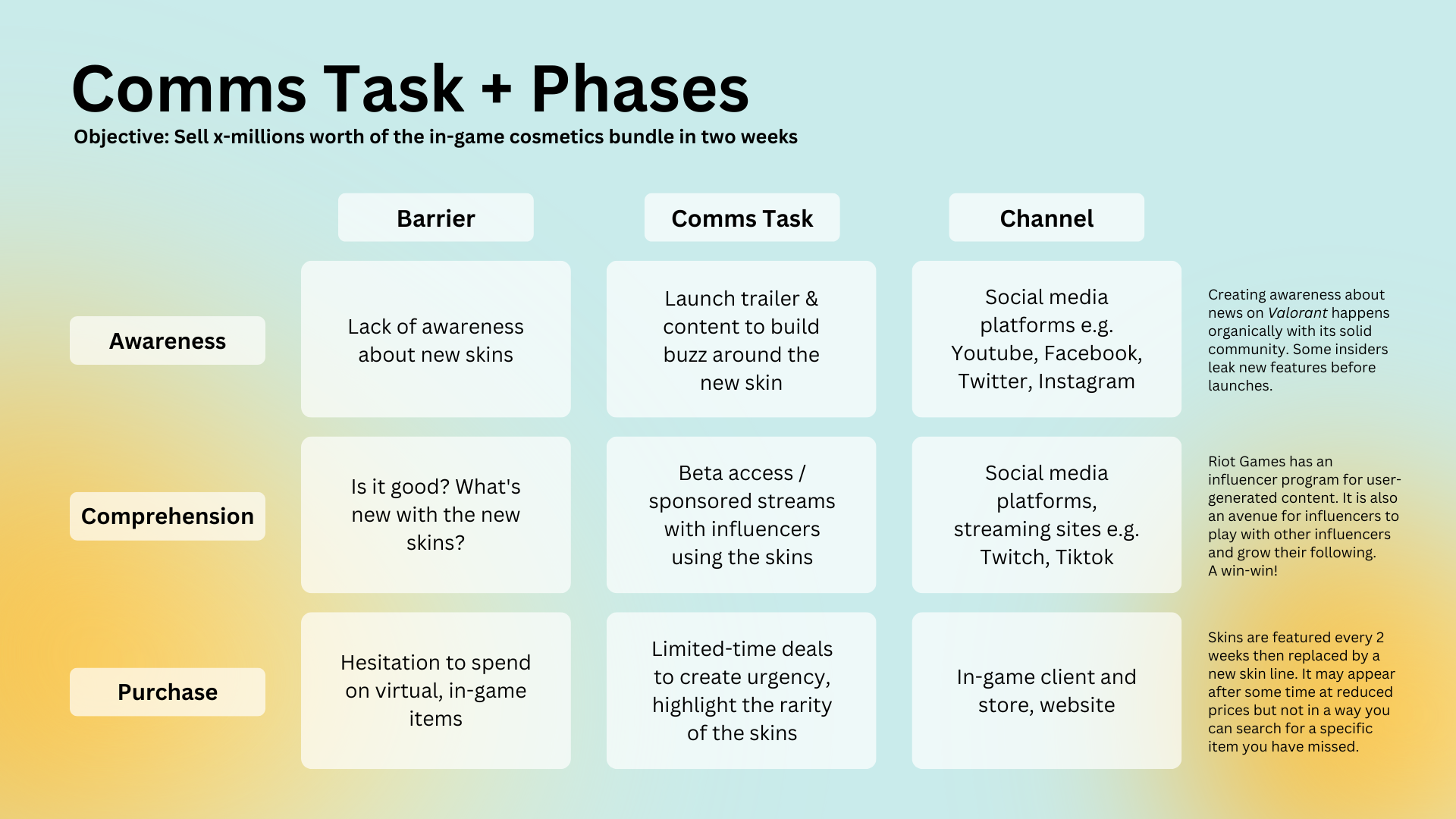- Blog/
How Riot Games Mastered The Art of In-game Selling
Table of Contents
From its humble beginnings in 2006, Riot Games has grown into one of the world’s leading video game companies. The developer gifted the world free-to-play games such as League of Legends and Valorant. It is also up there with the leaders in esports tournament organizers.
Riot Games has mastered generating revenue through in-game cosmetic purchases. Their formula? Build a highly engaged community and match it with strategic scarcity.
Listen to Your Community and Foster Buzz #
We will discuss this approach in the case of Valorant.
In only two years after its launch, Valorant has already managed to capture a battalion of loyal audiences. It listens and resonates well with its audiences.
Riot’s titles like League of Legends and Valorant foster loyal followings by:
-
CONSTANTLY IMPROVING WITH COMMUNITY FEEDBACK
The community discusses whether a character is overpowered or underpowered; or if certain areas of a map are unfairly difficult to navigate. Those are heard and improved on. -
INTRODUCING RELATABLE CHARACTERS THAT GENERATE ORGANIC BUZZ
In the Valorant universe, characters (known in-game as “Agents”) have different personalities, narratives, and origins. Moreover, battle maps are inspired by places around the world, with exact coordinates. -
EMBEDDING REAL-WORLD TIE-INS & POP CULTURE REFERENCES
Valorant gives its fans everything, from inside memes to pop culture references to tributes to its players. They will capture it all.
Create Urgency With Limited-Time Offers #
The majority of Riot’s $2.6M+ in daily revenue comes from in-game cosmetic skins. Skins are only available for purchase for two weeks before new ones launch.
This scarcity model creates urgency, with revenue spiking in the first few days of new skin releases. Players know they have a limited window to buy coveted skins.
Match Community Strength with Strategic Marketing #
Riot follows a streamlined formula to hype new skins at launch:
- Teaser videos build anticipation starting two weeks out
- Previews and giveaways generate buzz one week out
- Influencers showcase skins at release to ride wave

With only a two-week period per featured bundle, it makes sense if one sees the typical comms strategy as formulaic. But make no mistake, it is NOT easy.
This tactics-driven approach relies on Riot’s highly engaged community spreading organic word-of-mouth.
Maintain Engagement with Esports Events #
Beyond in-game purchases, Riot also organizes massive global esports tournaments for League of Legends and Valorant.
Events like the annual League of Legends World Championship immerse fans in the competitive scene. They serve to regularly reignite interest and passion within the highly engaged player community. And they don’t miss this chance to drop special edition skins for the tournament.
This also provides a separate monetization stream through tickets, merchandising and sponsorships. But more importantly, it keeps players invested in the game between content updates.
Riot leverages esports as both a distinct revenue stream as well as a powerful loyalty builder. The events continually refresh excitement within the game’s world.
Key Takeaways #
You can steal Riot’s mastery to grow your business by:
- Building highly passionate communities through constant listening
- Driving urgency with limited-time offers tied to scarcity
- Ensuring tactical marketing is supported by strong organic reach
- Supporting said tactical marketing with extraordinary ways to maintain engagement (like events)